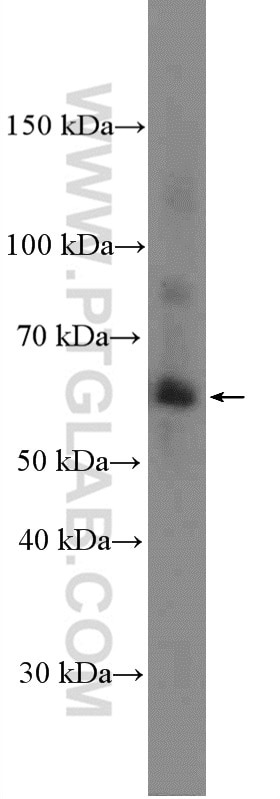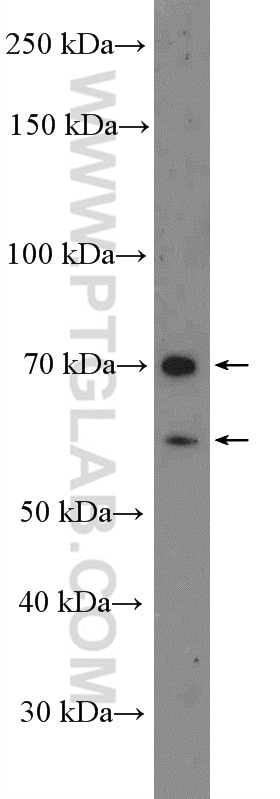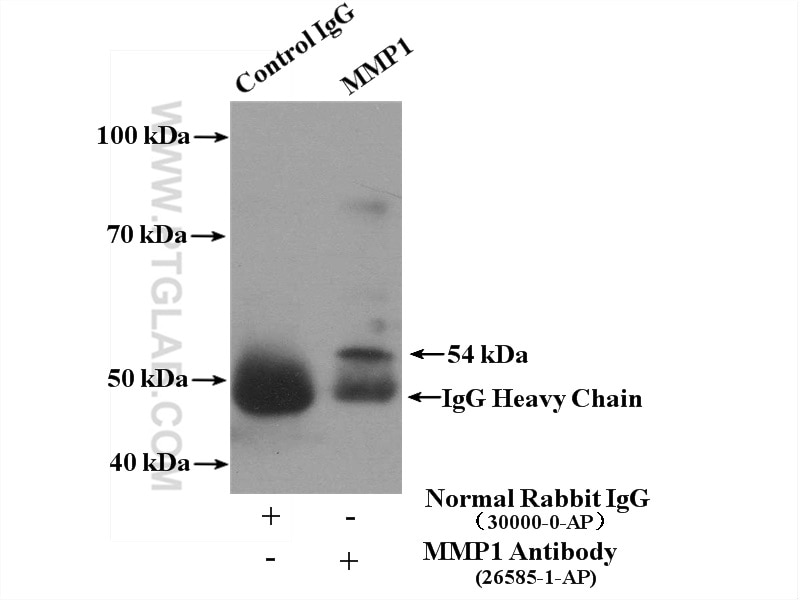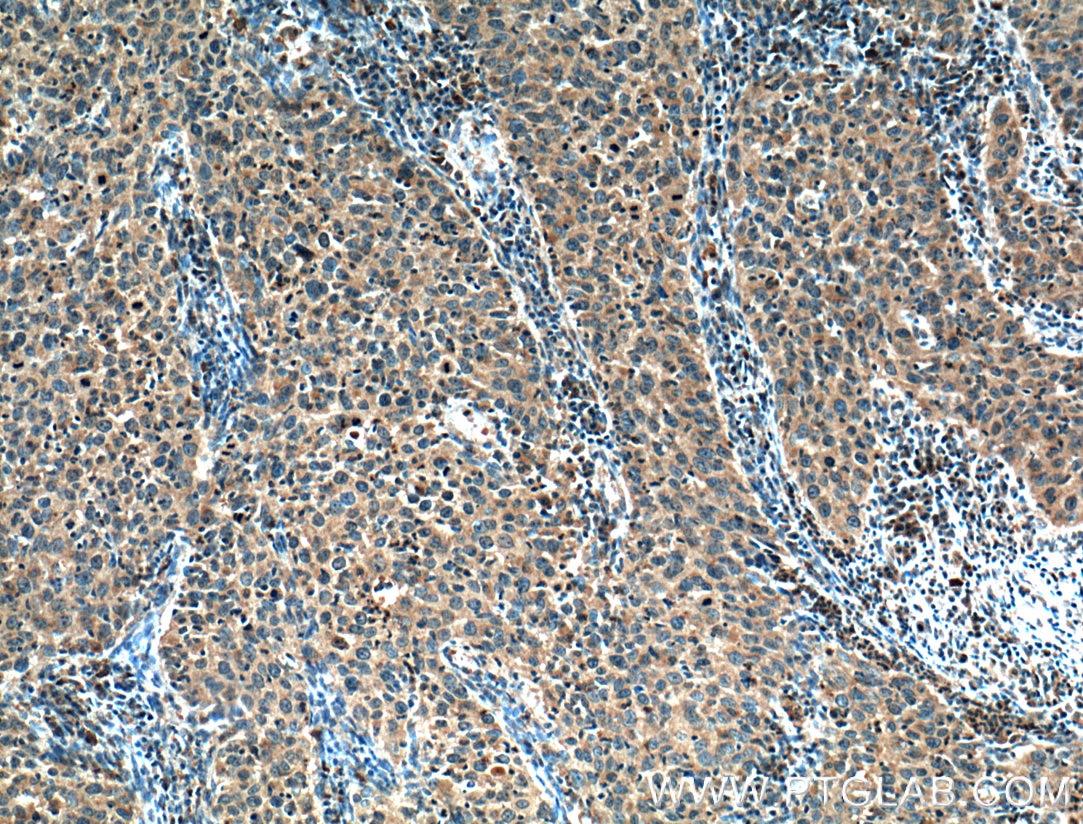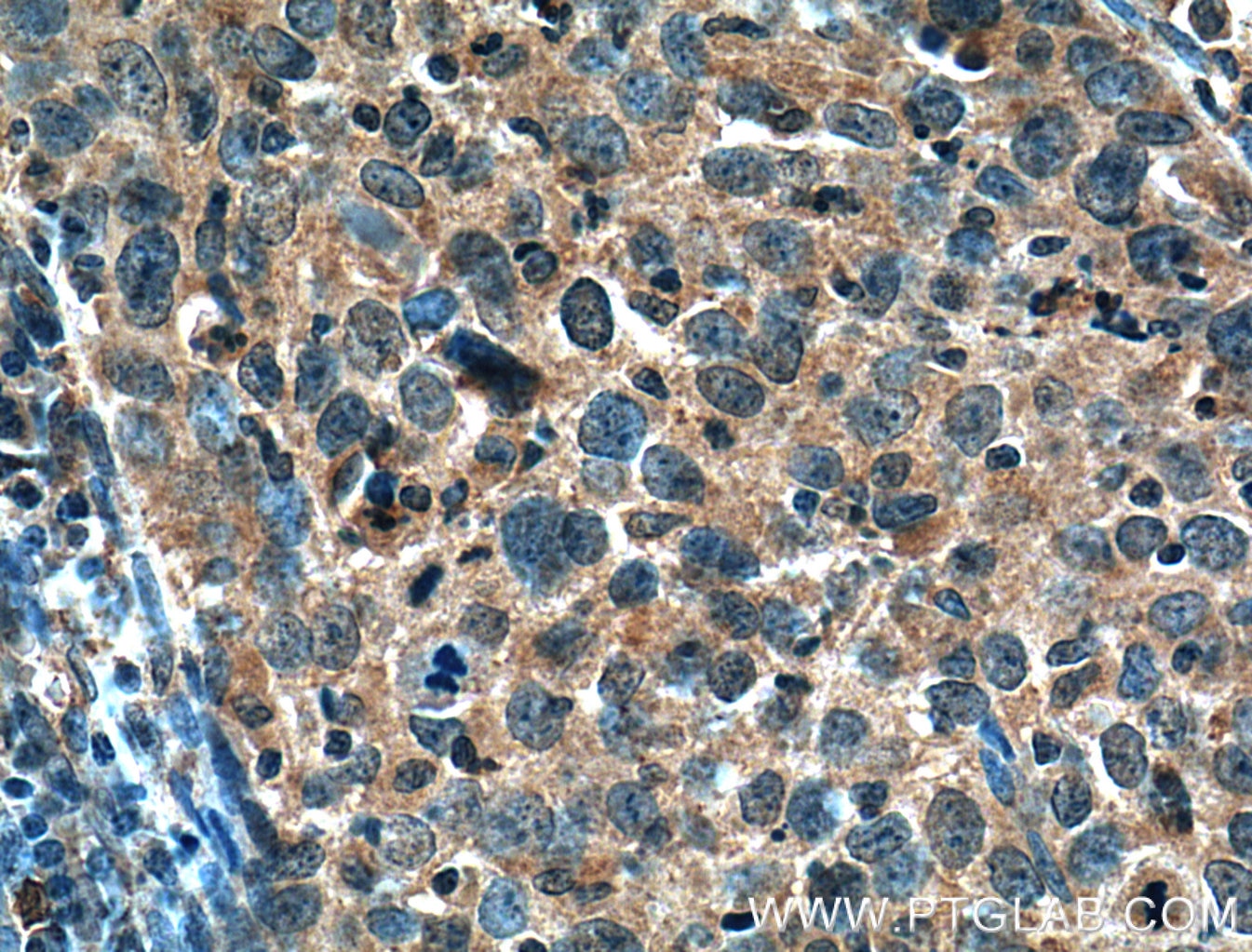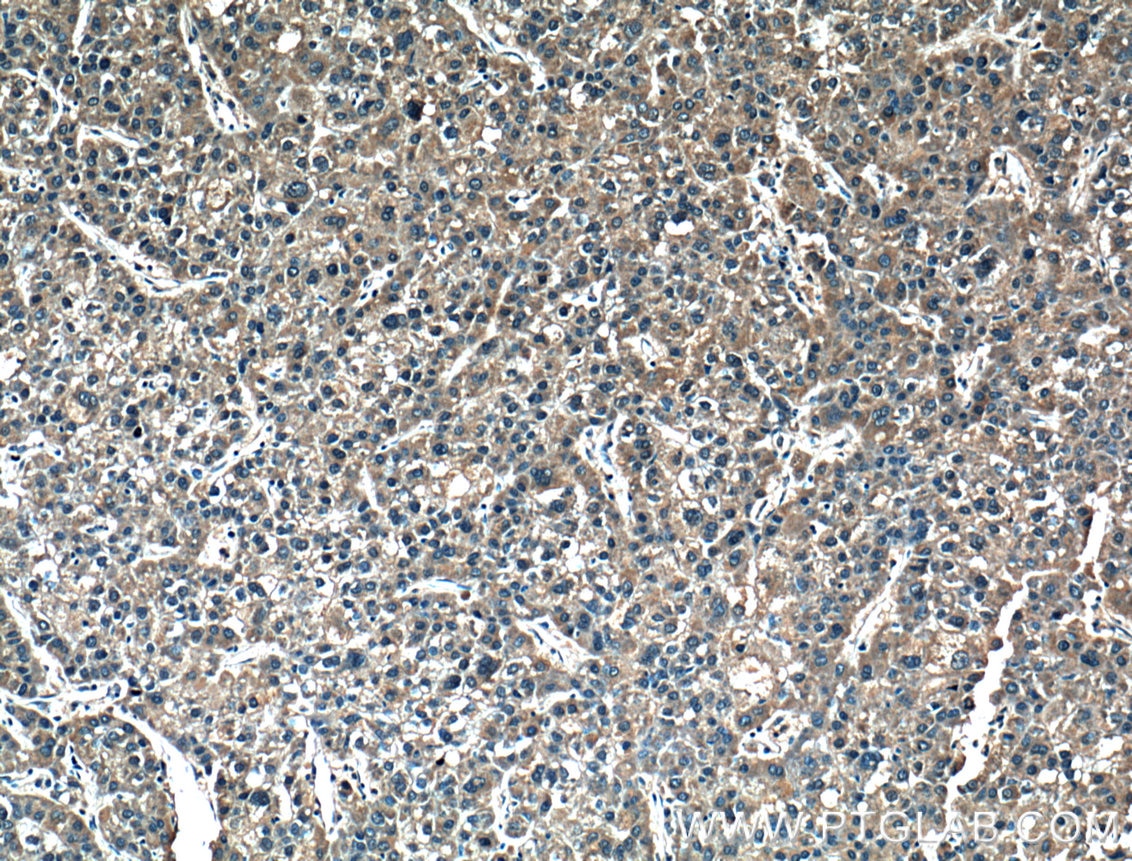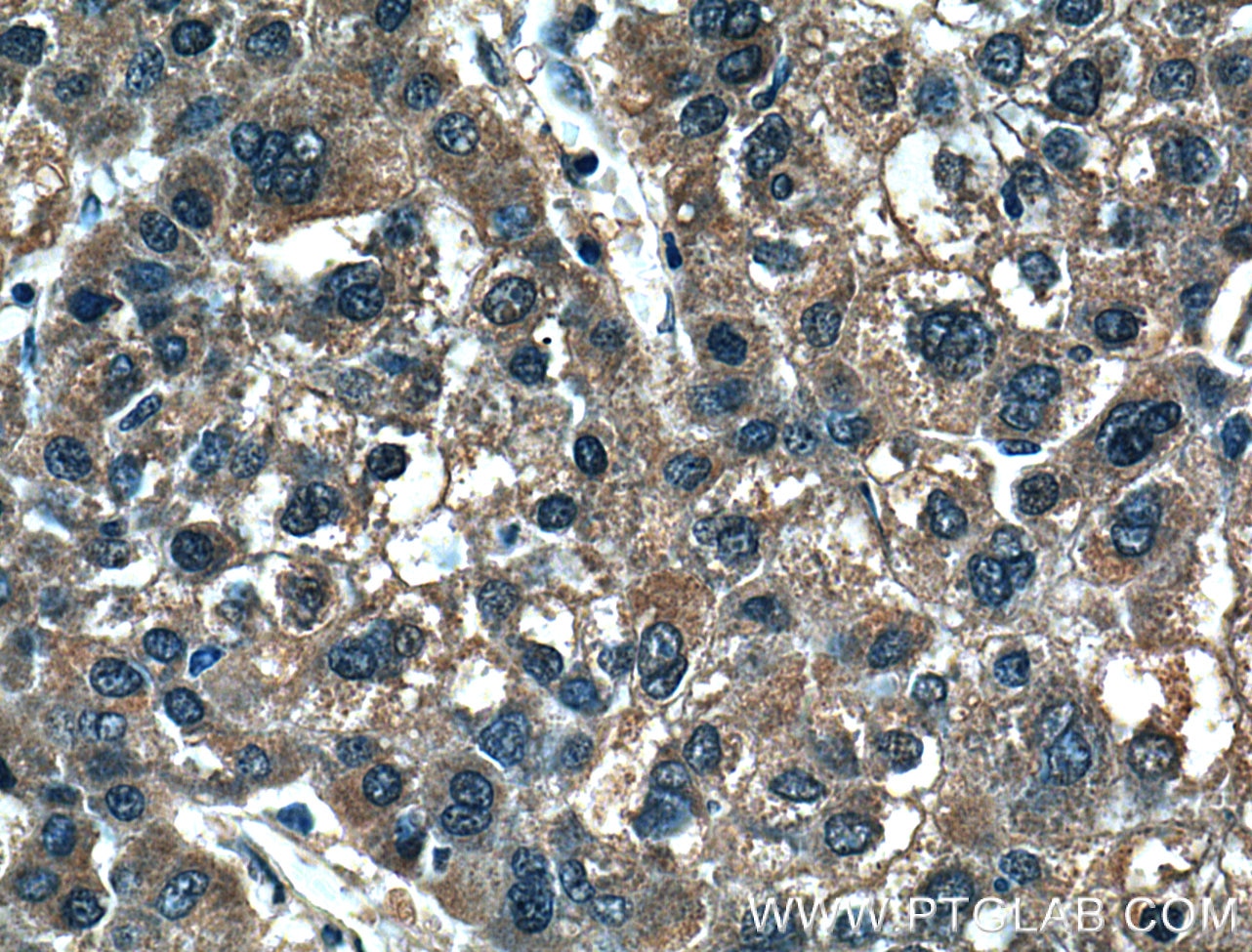MMP1 Polyklonaler Antikörper
MMP1 Polyklonal Antikörper für WB, IP, IHC, ELISA
Wirt / Isotyp
Kaninchen / IgG
Getestete Reaktivität
human, Maus und mehr (2)
Anwendung
WB, IHC, IP, ELISA
Konjugation
Unkonjugiert
Kat-Nr. : 26585-1-AP
Synonyme
Geprüfte Anwendungen
| Erfolgreiche Detektion in WB | A375-Zellen, NIH/3T3-Zellen |
| Erfolgreiche IP | Raji-Zellen |
| Erfolgreiche Detektion in IHC | humanes Zervixkarzinomgewebe, humanes Leberkarzinomgewebe Hinweis: Antigendemaskierung mit TE-Puffer pH 9,0 empfohlen. (*) Wahlweise kann die Antigendemaskierung auch mit Citratpuffer pH 6,0 erfolgen. |
Empfohlene Verdünnung
| Anwendung | Verdünnung |
|---|---|
| Western Blot (WB) | WB : 1:200-1:1000 |
| Immunpräzipitation (IP) | IP : 0.5-4.0 ug for 1.0-3.0 mg of total protein lysate |
| Immunhistochemie (IHC) | IHC : 1:100-1:400 |
| It is recommended that this reagent should be titrated in each testing system to obtain optimal results. | |
| Sample-dependent, check data in validation data gallery | |
Veröffentlichte Anwendungen
| WB | See 5 publications below |
| IHC | See 1 publications below |
| IP | See 1 publications below |
Produktinformation
26585-1-AP bindet in WB, IHC, IP, ELISA MMP1 und zeigt Reaktivität mit human, Maus
| Getestete Reaktivität | human, Maus |
| In Publikationen genannte Reaktivität | human, Maus, Ratte, Rind |
| Wirt / Isotyp | Kaninchen / IgG |
| Klonalität | Polyklonal |
| Typ | Antikörper |
| Immunogen | MMP1 fusion protein Ag25073 |
| Vollständiger Name | matrix metallopeptidase 1 (interstitial collagenase) |
| Berechnetes Molekulargewicht | 54 kDa |
| Beobachtetes Molekulargewicht | 62 kDa |
| GenBank-Zugangsnummer | BC013875 |
| Gene symbol | MMP1 |
| Gene ID (NCBI) | 4312 |
| Konjugation | Unkonjugiert |
| Form | Liquid |
| Reinigungsmethode | Antigen-Affinitätsreinigung |
| Lagerungspuffer | PBS with 0.02% sodium azide and 50% glycerol |
| Lagerungsbedingungen | Bei -20°C lagern. Nach dem Versand ein Jahr lang stabil Aliquotieren ist bei -20oC Lagerung nicht notwendig. 20ul Größen enthalten 0,1% BSA. |
Hintergrundinformationen
MMP1, also named as CLG, belongs to the peptidase M10A family. MMP is the main enzyme that cleaves fibrillar collagen, namely types I, II, III, VII, and X.It is involved in cell migration and invasion, and is frequently up-regulated in cancer cells. It can be cleavage to two major forms (22 kDa and 27 kDa) by undergoing autolytic,and the minor form (25 kDa) is the glycosylated form of the 22 kDa form. The 27 kDa form has no activity while the 22/25 kDa form can act as activator for collagenase.The sizes of pro-MMP-1 and active MMP-1 from human synovial fibroblasts have been reported as 52 to 56 kDa, depending on glycosylation, and 41 to 45 kDa, respectively.In addition ,a band of 62-kDa observed in the current study is pro-MMp-1(PMID:9418730).
Protokolle
| PRODUKTSPEZIFISCHE PROTOKOLLE | |
|---|---|
| WB protocol for MMP1 antibody 26585-1-AP | Protokoll herunterladen |
| IHC protocol for MMP1 antibody 26585-1-AP | Protokoll herunterladenl |
| IP protocol for MMP1 antibody 26585-1-AP | Protokoll herunterladen |
| STANDARD-PROTOKOLLE | |
|---|---|
| Klicken Sie hier, um unsere Standardprotokolle anzuzeigen |
Publikationen
| Species | Application | Title |
|---|---|---|
Breast Cancer Res Treat Exosomal MMP-1 transfers metastasis potential in triple-negative breast cancer through PAR1-mediated EMT. | ||
Front Genet Exhausting circ_0136474 and Restoring miR-766-3p Attenuate Chondrocyte Oxidative Injury in IL-1β-Induced Osteoarthritis Progression Through Regulating DNMT3A. | ||
Mol Med Rep Icariin inhibits MMP‑1, MMP‑3 and MMP‑13 expression through MAPK pathways in IL‑1β‑stimulated SW1353 chondrosarcoma cells. | ||
Sci Rep WNTA5-mediated miR-374a-5p regulates vascular smooth muscle cell phenotype transformation and M1 macrophage polarization impacting intracranial aneurysm progression | ||
J Cell Mol Med p16INK4a Deletion Alleviated Obesity-Associated Kidney Fibrosis by Regulating Metabolic Reprogramming and the Inflammasome Pathway | ||
Int J Mol Sci Impact of Escherichia coli and Lipopolysaccharide on the MAPK Signaling Pathway, MMPs, TIMPs, and the uPA System in Bovine Mammary Epithelial Cells |
